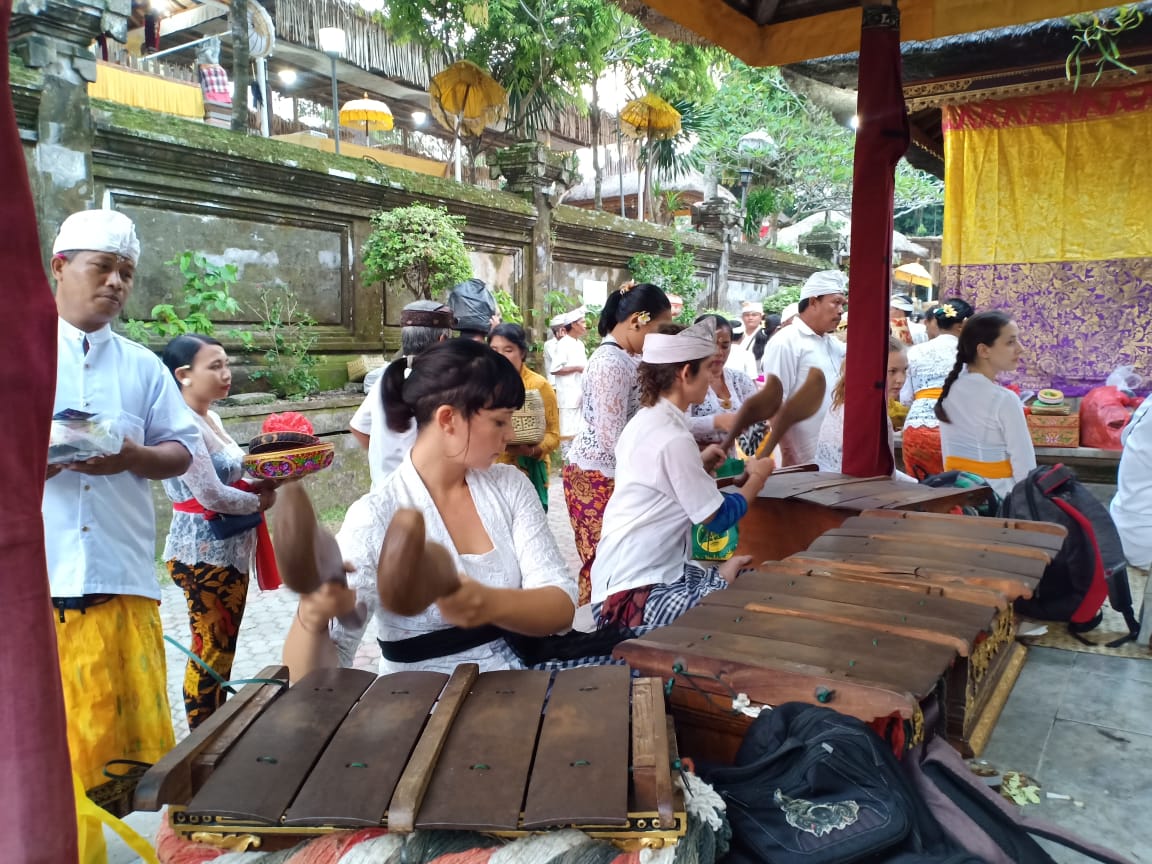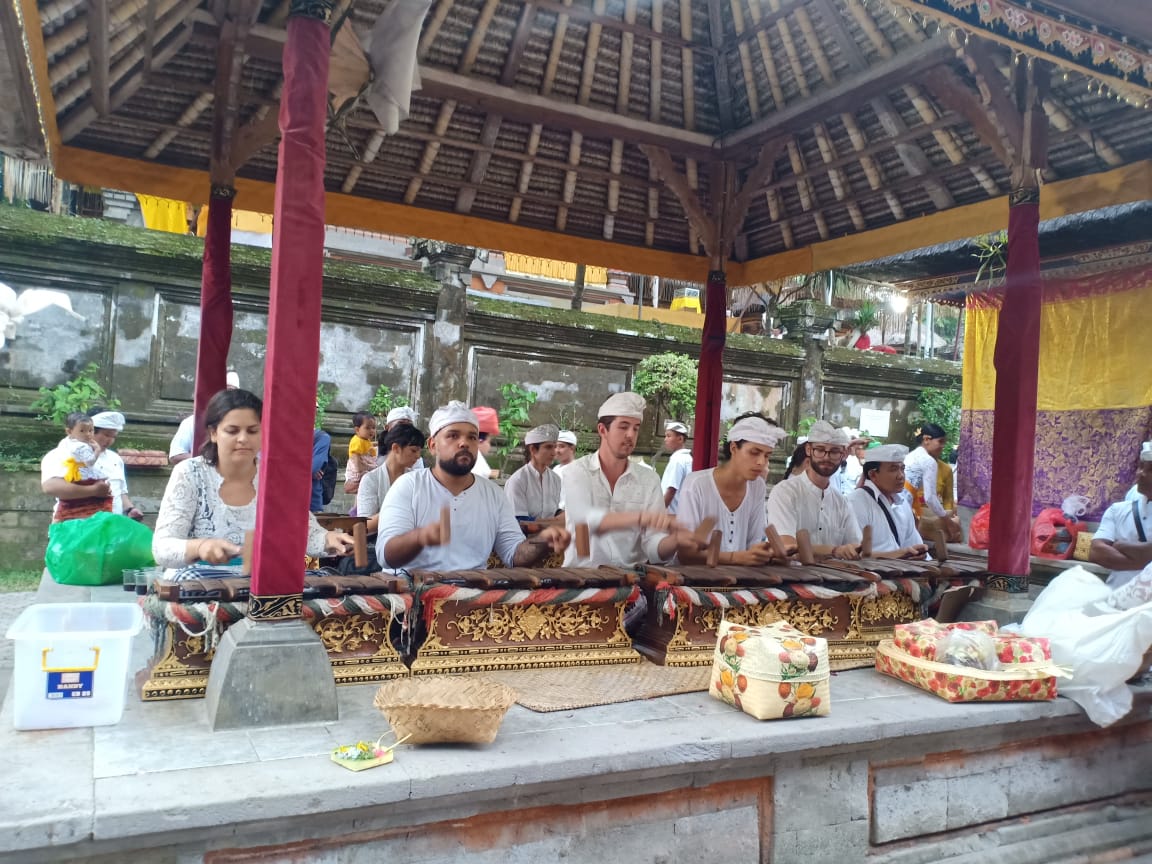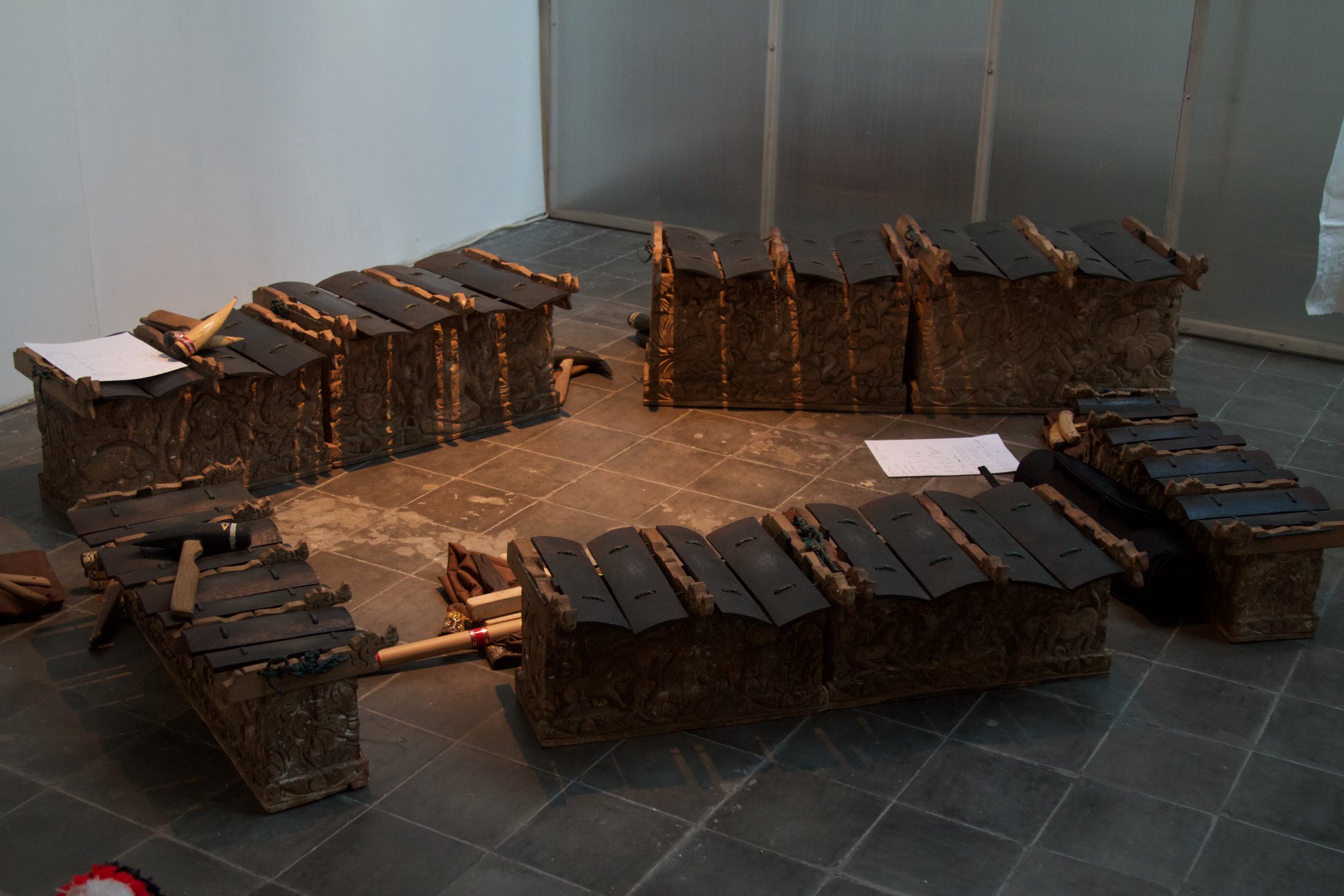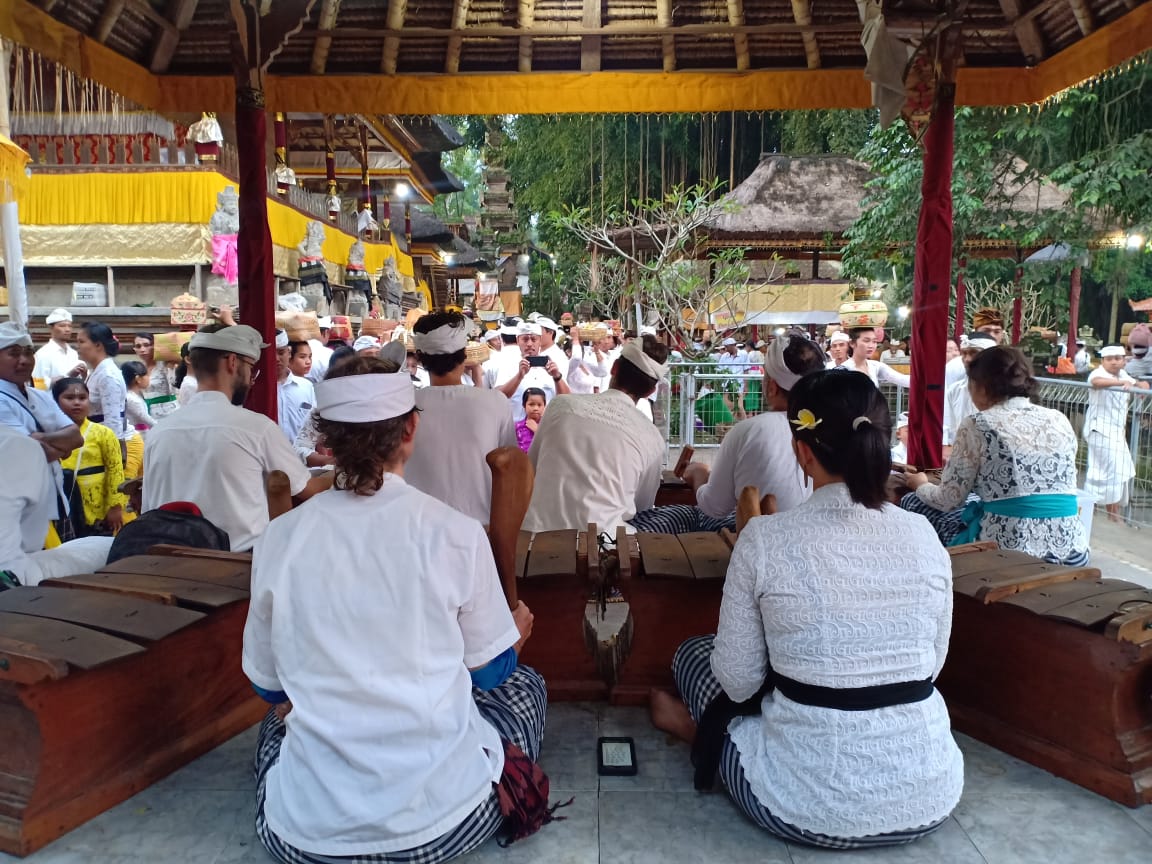Bring balinese gamelan to Portugal
Fundraising campaign by
Vanessa Goncalves
-
€106.00raised of €1,300.00 goal goal
No more donations are being accepted at this time. Please contact the campaign owner if you would like to discuss further funding opportunities
Campaign Story
Hi everyone,
The aim of this project is to kindly ask for your support to help me bring an ensemble of Gamelan Selonding (a brief explanation of this instrument is below) from Bali, Indonesia to Portugal so that I can develop artistic and educational projects with this wonderful Indonesian musical tradition.
My main targets are:
1. To create an ensemble to perform traditional repertoire andalso songs by contemporary Balinese composers.
2. To develop projects for children and teenagers with learning difficulties, as well as those from poorer socio-economic backgrounds.
I believe that by investing in cultural and artistic education through sharing an ancient Southeast Asian tradition with people on the other side of the globe may bring a wider perspective towards cultural diversity, inspire other musicians and empower individuals with fewer opportunities.
Who Am I?
My name is Vanessa, I am from Portugal and I consider myself a hopeless dreamer.
As some of you may know I decided to move to Bali, Indonesia one year ago in order to learn the traditional musical of the island, specifically Balinese gamelan. I had been given a scholarship through an international education program called Darmasiswa, sponsored by the Indonesian government. Without this aid, such a beautiful experience would never have been possible for an extended period.
My educational background is in Music and Anthropology and this was the first time I could gather these two interests into a singular experience. I was learning Javanese Gamelan in Portugal for many years, but I had dreamed about learning the Balinese Gamelan, which was impossible there because there are no available ensembles and off course, no specialized teachers.
Now I am brimming with knowledge of Balinese gamelan music and with the help of local teachers, I have developed the technical skills to play these instruments. Unfortunately back in Portugal, I will not be able to apply my knowledge or skills because there areno Balinese Gamelan ensembles. There are many different kinds of gamelan ensembles and I was lucky to have the opportunity to play many of them, although during my stay in Indonesia I truly fell in love with Gamelan Selonding, which is one of the most ancient and sacred types of gamelan ensemble in Bali.
" In a general way, the word "gamelan" means orchestra, or the music played by the orchestra, but it corresponds to the Western sense of that word only in that it conjures up an image of a group of people making music together. To be precise, gamelan refers to the instruments themselves, which exist as an inseparable set, and not to a group of individuals who gather to play upon them.
The components of the gamelan come in many combinations, tunings and sizes, each with specific religious or secular functions. There are almost as many different kinds of gamelan in Bali as there are occasions for them to be heard.
(...)
Gongs are the strongest and most important timbre in most gamelan(...). Enjoying the support of the gong's anchoring are the drums, flutes and keyed metal instruments (metalophones) that comprise the remainder of the ensemble.
Most of these instruments are constructed primarily of bronze, but some are made wholly from bamboo, and a few others from esoteric materials. Each has its own name and definite musical function. Normally they all must play together in order for the music to sounds as it should."
A brief history of the balinese gamelan
" Early in the first millennium A.D., a bronze age technology as emerged in Southeast Asia that ultimately facilitated the manufacture of musical instruments. The musicians of the Philippine kulintang, the phi phat of Thailand and related ensembles in Burma, Cambodia and other places in that part of the continent all use bronze gongs in making music. But it is in Java and neighbouring Bali that the most development occurred, and it is exclusively this two places with which the term gamelan is associated. (...)
Balinese music ultimately traces important parts of its origins to Java, and even now the two islands music share similar instruments, tuning systems and general principles of organization. But beyond that, the music they each produce reflects the vast differences between their cultures and temperaments of their people. (...)
In Bali the limited geographic area and the native animism with Hinduism combined served to insure the firm implantation of the gamelan tradition outside as a popular art. (...)
Balinese music is first and foremost an oral tradition. While a kind of musical notation does exist, players almost never use it. All music is passed down from generation to generation through the guru-disciple relationship."
Gamelan Selonding
"Gamelan Selonding (or selunding) is one of a group of 7-tone pélog ensembles in Bali distinguished by their ancient origins and extremely sacred connotations. They are among the oldest ensembles on the island, predating the gamelan gambuh. Selonding is associated with Bali Aga, or so-called pre-Hindu villages scattered about the hills of eastern Bali. Many of the instruments used, and almost all of the compositions played on it are considered to have been bequeathed to the villagers by deities in the mythological past.(...)
Selonding is the only gamelan with keys cast from iron. The keys are strung up over low toughs and played with club-shaped mallets in an unusual two-handed technique. Although the makeup of the gamelan varies from village to village, it is often composed exclusively of these instruments, although a set of cengceng may be added for music that accompanies dance. Selonding melody and figuration has a soft rippling sound quite distinct from the piercing sonority of bronze."
Although for centuries these gamelan were used only in specific ritual contexts, Nowadays they re becoming popular, and copies of this ensembles are now in the possession of the conservatories and in numerous villages and private organizatons where this ancient music can be learned in a secular environment.
Organizer
- Vanessa Goncalves
- Campaign Owner
Donors
- Anonymous
- Donated on Jul 02, 2019
- Anonymous
- Donated on Jul 01, 2019
Chibi Vanessa
No updates for this campaign just yet
Donors & Comments
- Harriet Riley
- Donated on Jul 03, 2019
Hell yeah, go Vanessa!
- Anonymous
- Donated on Jul 02, 2019
- Anonymous
- Donated on Jul 01, 2019
Chibi Vanessa
- Sara Simões
- Donated on Jun 30, 2019
Espero que esse gamelão vá contigo para Portugal!
- Anonymous
- Donated on Jun 28, 2019
- Anonymous
- Donated on Jun 28, 2019






.jpg)


Hell yeah, go Vanessa!